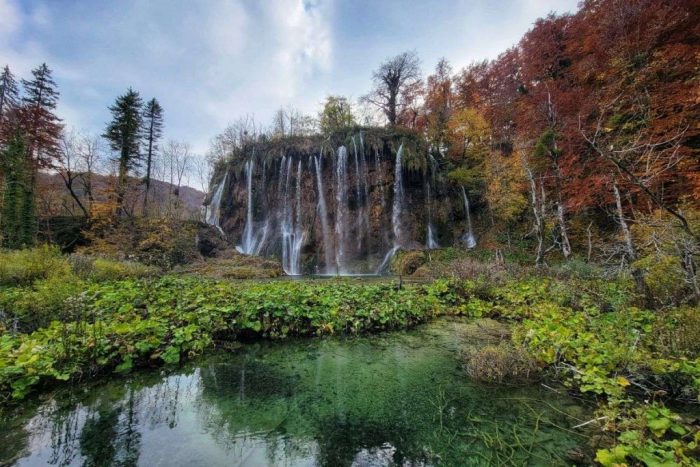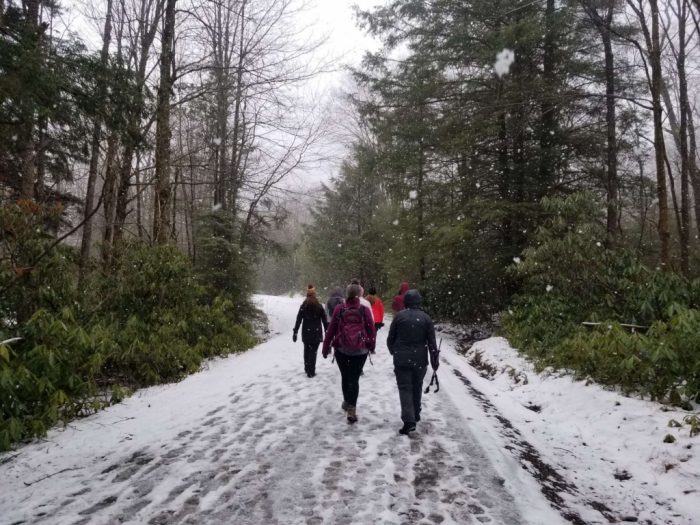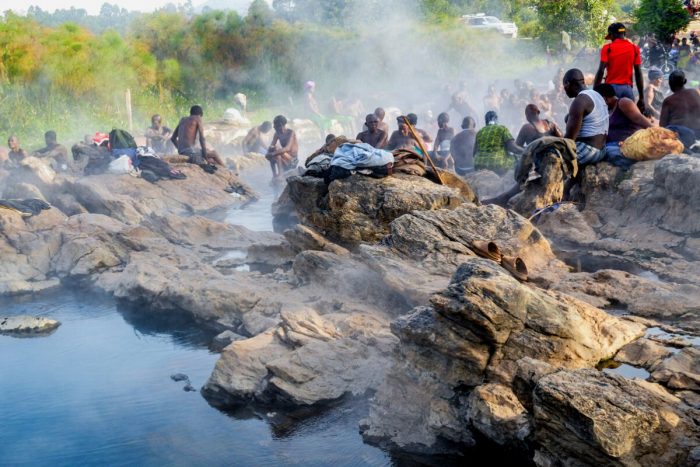Expert Guide to Car Camping (With Downloadable Checklist)
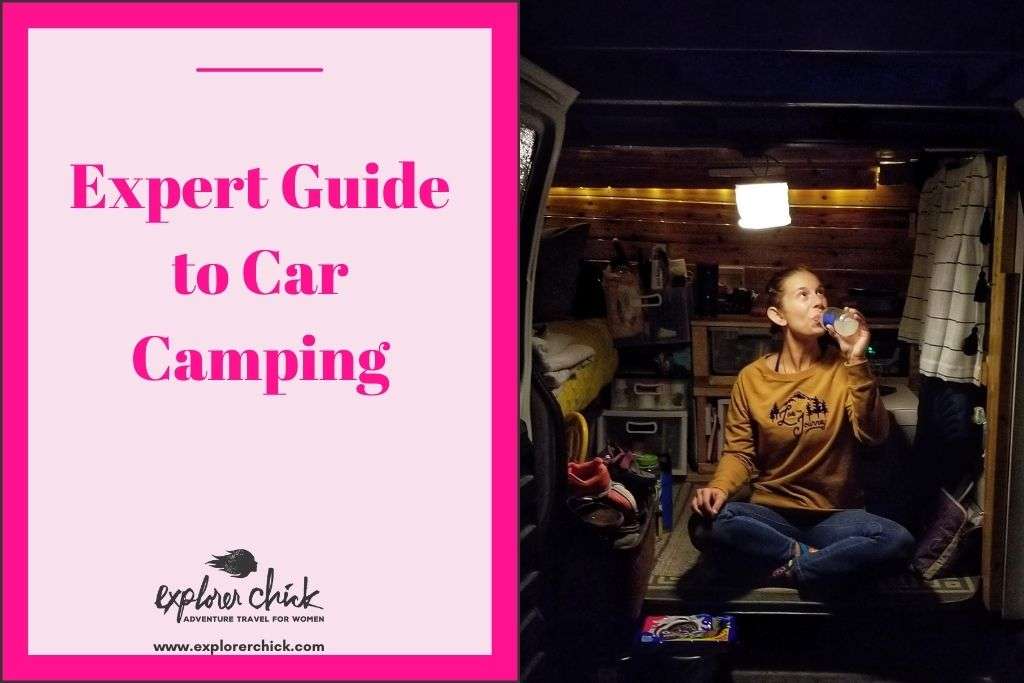
Have you gotten on the #VANLIFE train yet?
While “van life” has become supremely popular in recent years, you don’t necessarily need an expensive RV or tricked out camper van to be a certified car camper. For your first car camping trip, you can start by just packing up the car you have with supplies and get on the road to an outdoor adventure.
In this post, we’ll go over all things car camping from the definition, essentials, planning, and extra pro tips.
What Is Car Camping?
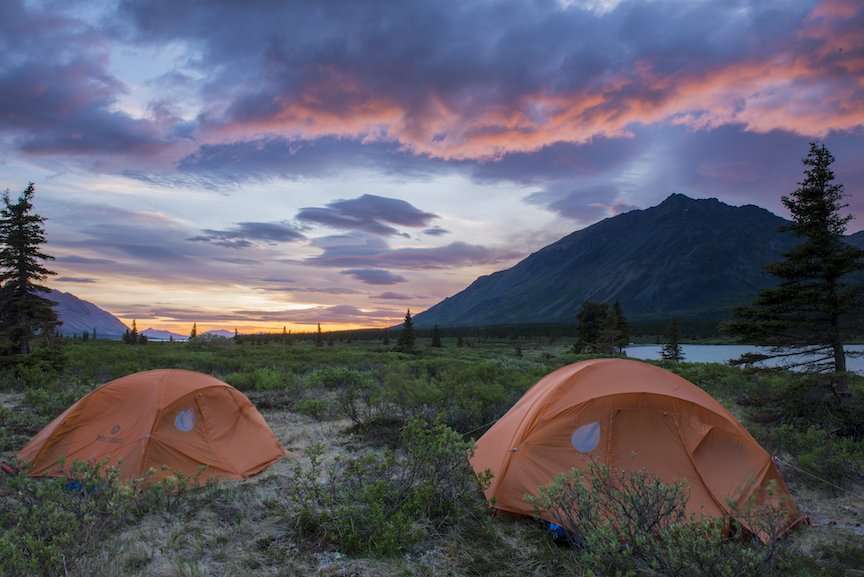
So, what exactly is “car camping”? While it can mean a few different things, essentially car camping is just as it sounds, it can mean pulling up to a campsite and either using your car to camp in or pitch a tent on site. Camping in your car can be a great foray into spending more nights outdoors.
Is Car Camping Safe?
Car camping can be extremely safe and is no real additional danger than traditional camping or RV camping. You have your vehicle to protect you from the elements as well as the ability to just turn the key and go if you don’t feel comfortable where you are.
Camping in your car usually involves a well-used campground or permitted lands, so you’ll often not be alone avoiding any incidents where you may need assistance if you’re camping solo. Locked doors can also feel a lot more secure than a zippered tent entrance and cloth walls.
Car Camping Essentials: What to Pack
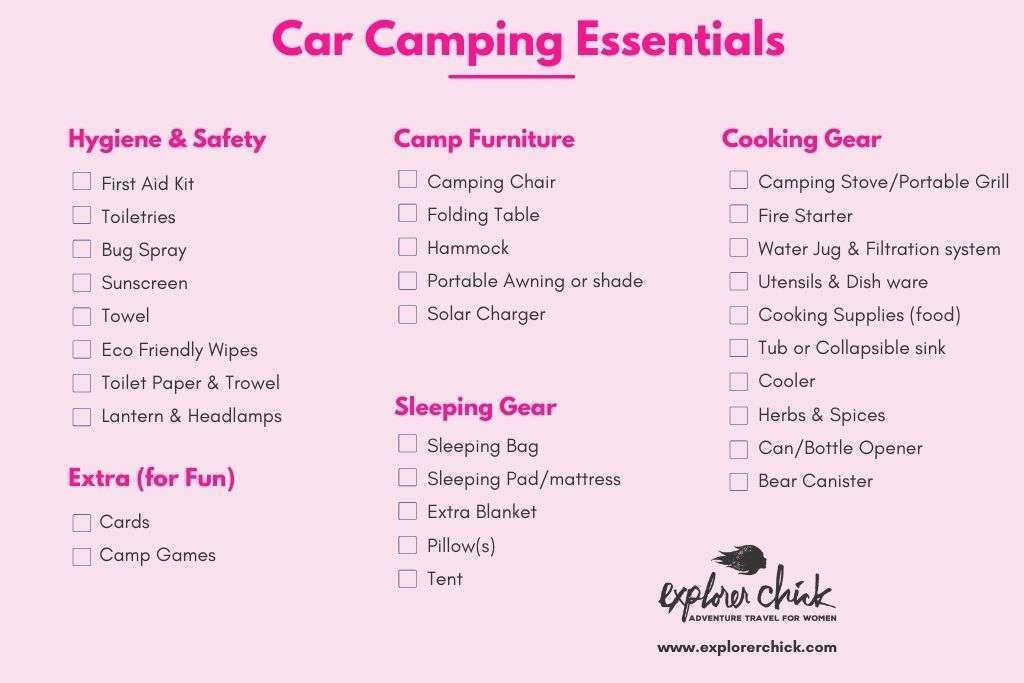
You’ve decided to jump in the driver’s seat, hit the road, and give car camping a go — hell yeah! Now comes the question, what to pack? Spoiler: it’s generally more than just a good attitude (though that should definitely come too!).
The main categories include sleeping, cooking, hygiene and safety, furniture, and clothes.
Sleeping Gear
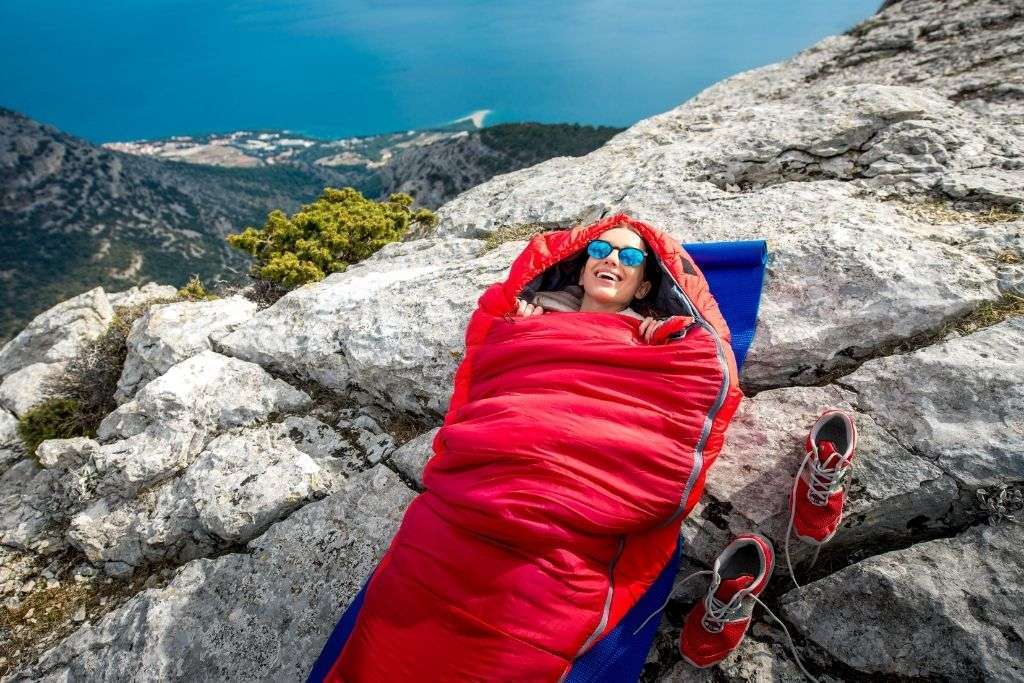
The benefit of a traditional car camp is you can get a little more plush with your sleeping arrangements. While you have weight to contend with on a traditional backpacking trip, car camping allows for some extra weight and luxury like a foam sleeping mat, air mattress, or even full-on mattress (if you can fit it in your car). Plus, a sleeping bag and pillow. Depending on the size of your car, you may be able to set up a bed in your backseat. Otherwise, you’ll want to bring a tent along with you so you have the option to sleep on site if need be.
While car camping is an opportunity for you to bring along more creature comforts, you can just as easily use backcountry camping gear as well. In fact, car camping is a perfect opportunity to test out any new equipment you may need to carry with you on the trail for another trip.
Sleeping Gear Packing Checklist:
- Sleeping bag
- Extra blanket
- Sleeping pad/mat or if your car allows, an air/camping mattress
- Pillow(s)
- Tent (if sleeping outside of your car)
Cooking Gear
Kitchen supplies like a camp stove, fire starter, and easy to clean utensils, dishes, pots, and pans are essential. Make a meal plan ahead so you can maximize space in your cooler and avoid having too many dirty dishes to clean up by thinking of delicious and easy one pot meals or meals that require minimal cooking.

A water jug or filtration system is also key. If potable water sources may be an issue, you want to make sure you bring enough water with you for the whole trip or a filtration mechanism to clean water. If you’ll be somewhere without any water around, you’ll just need to pack all the water with you.
In many places, summertime fires have become a real issue. Make sure you know the local fire regulations and be sure to have a safe campfire if there aren’t any restrictions in place. If you don’t have the option of cooking by open flames, a portable grill or a camp stove is a great alternative.
Cooking Gear Packing Checklist:
- Camping Stove or portable grill
- Fire Starter
- Water Jug & Filtration System
- Reusable water bottle
- Utensils & Dishware
- Cooking Supplies
- Tub or collapsible sink for dishes
- Cooler
- Herbs & Spices
- Can/bottle opener
- Bear canister (or other food storage container)
Get more tips for camp cooking gear from our blog post on creating the ultimate campfire cooking kit.
Hygiene & Safety
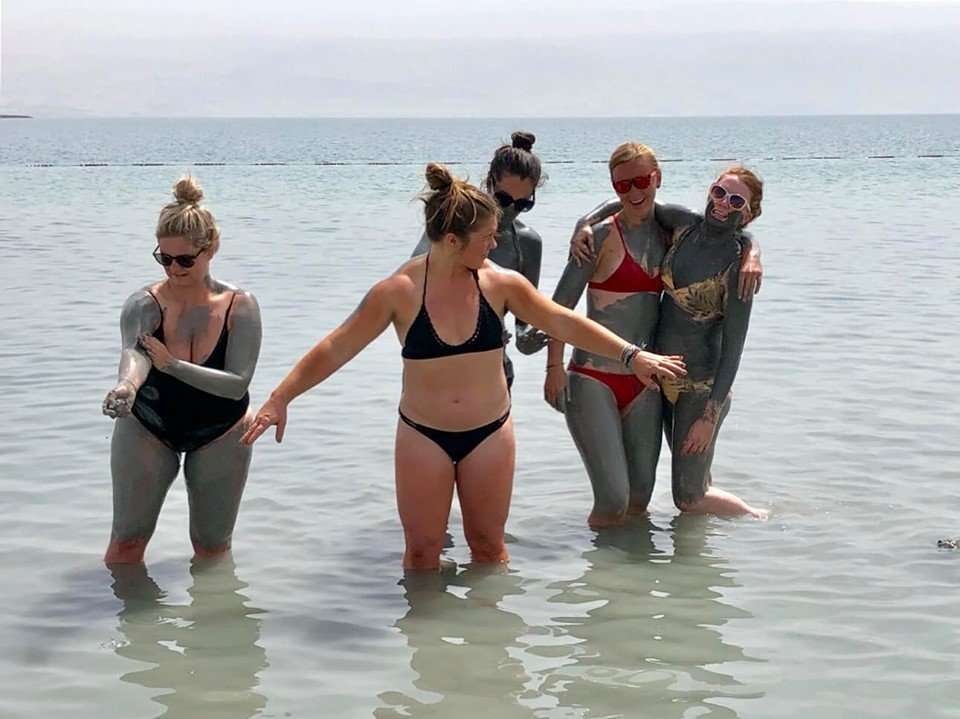
The other bonus to a car camp vs a tent or backpack camp is that you can bring a few more “luxury” items along with you because you have the extra storage space. If the grounds have bathrooms, you can bring along a wider variety of toiletry items as opposed to very little you’d have in your backpack, if anything.
If your site doesn’t have a shower but you’d like the option to rinse off, you can splurge on a portable shower. Just make sure you have the extra water in mind and don’t dive into your potable drinking water for bathing. If you don’t want to deal with setting up a shower, you can always find biodegradable wipes to clean up some dirt or dust (that’s basically a shower, right?!).
Items like a headlamp, first aid kit, bug spray, and sunscreen also come in handy when planning a safe camping trip. Solar powered headlamps or lanterns are ideal in order to avoid wasting energy.
Hygiene & Safety Checklist:
- First Aid Kit
- Toiletries (preferable to be natural or biodegradable/outdoor friendly)
- Bug Spray
- Sunscreen
- Waterproof shoes
- Quick dry towel
- Biodegradable/Eco Friendly wipes
- Toilet Paper & trowel if there aren’t toilets available
- Campsite lighting, like lantern & headlamps
Camping Furniture
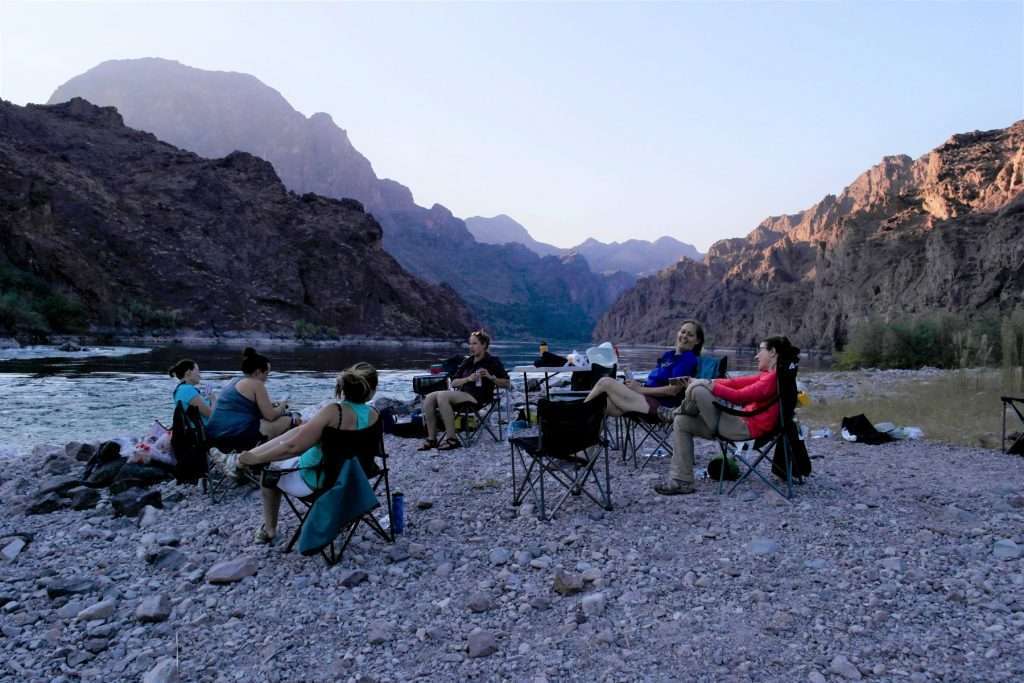
Ahem, did anyone say glamping?! Cause we’re here for it! This is where you can really see why car camping has some major perks.
Normally with backpacking you would be attempting to carry as little weight as possible on your back. With 4 wheels and an engine however, you have the advantage of bringing along a few items that will make your site feel like a home away from home.
Folding camping chairs and tables and even a pop-up awning can really add to the comfort of camp. Even something small like a hammock adds to the experience. After a long day of hiking, having something like a living room outdoors can make for a perfect resting area.
Camping Furniture Checklist:
- Camping chair
- Folding table
- Hammock (optional but wonderful)
- Portable awning or shade structure
- Solar charger
- Honestly, the options are endless here
Clothing
Always pack prepared.
Bring layers, knowing that your car will also get cold in the evening just like a tent would. Even though you’re protected from inclement weather, bringing things like rain gear can be helpful if you want to still experience the outdoors.
Believe us — it SUCKS to be ill-prepared for an unexpected heatwave or a torrential downpour. Come with the ability to dress for any weather and mother nature will be much less likely to spoil your trip.
Extra Car Camping Gear
This is the fun part.
Bringing those what could be considered frivolous items. Sure, you wouldn’t bring them on a backpacking trip, but with car camping you can absolutely pack your trunk full of fun entertainment for quality down time at the campsite.
I always suggest a deck of cards, whether you’re at a drive-in campsite or a backcountry trekking trip. It’s a small, versatile way to pass the time both on your own or with a group. If you have the space, variety is key. Bring a game that requires physical activity, like a frisbee, a ball, ladder toss, horseshoes, cornhole, a massive Jenga set — there are SO many different possibilities!
In addition, don’t forget to pack some fun and challenging brain games, in case you want to rest your tired feet after a day of adventure.
Your Ultimate Car Camping Checklist
Want to have a checklist ready to post on your refrigerator when the adventure bug bites? We got you! Download our FREE car camping checklist now!
How to Plan your Car Camping Trip
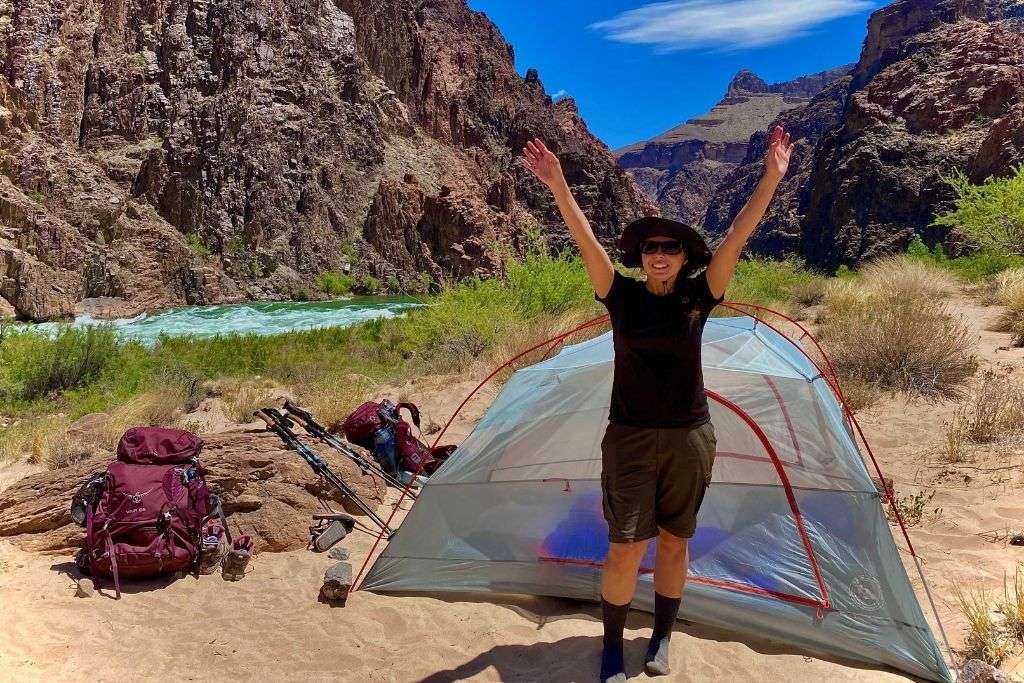
While Instagram might have you thinking that people just spontaneously drive into the sunset to have a wonderful first camping trip, usually you gotta do a bit more legwork than that.
Find Your Campsite
Before you pack up the car and hit the road for some camping adventures, you want to know where you’re going.
Our best tip? Make reservations in advance! Camping has seen a major surge and with weekend getaways and limited permits, spots fill up quickly especially for the best campsites. If you have a specific site you want for your next adventure, booking out well in advance will guarantee you a space.
Selecting a place to camp can be easy with the right tools. Apps like Dyrt, Hipcamp, iOverlander, and Harvest Hosts can be a huge help to find paid campgrounds, dispersed camping, and public lands. The National Parks Service website offers links and tips for reservations for most campgrounds in and around NPS lands. BLM land, National Forest Lands or Wildlife Management Area and National Grasslands offer free campsites, but know the Leave No Trace Principles to recreate responsibly — these sites often don’t have amenities like fire pits, trash cans, or toilets, so come prepared to pack it out.
Be sure to know the permits and parking situations before you set up your site. Avoid parking on private land or a section of land where camping is prohibited. First off, it isn’t great ethically, but it can also lead to hefty fines or a rude wakeup call in the middle of the night from someone telling you to move your car.
If you’re en route to the next destination and need a quick place to crash for the night, parking lots for most Cracker Barrels, Walmarts, Cabelas, and Planet Fitness (with a membership) allow overnight parking.
Check Road Conditions and Weather
Check to see if the road conditions are permissible for your type of vehicle to arrive at your destination with minimal wear and tear. Certain areas may only be accessible by 4×4 vehicles, so do a little research on your route prior to departure. The last thing you want is to plan and pack, only to show up at the entrance unable to maneuver your car safely to the campsite.
This is particularly important for winter months with snow and road closures.
Logistics
Take care of all the logistics ahead of time as much as possible. Know that there are some issues with cell service when exploring backcountry areas (you do want to disconnect, right?). Downloading google maps ahead of time or using Maps.me is a good way to stay connected to the driving route. Or hey, if you’re old school, bring a paper map. (They still exist, I promise!)
Satellite or cell tower extensions are useful if you have the means for some extra equipment. Enjoy more of your trip with the planning on the front end of the journey, before you even get behind the wheel. Contingency plans are always a good idea for outdoor adventures as well (what will you do if it starts snowing or raining?).
Extra Pro Tips for Car Camping Trips
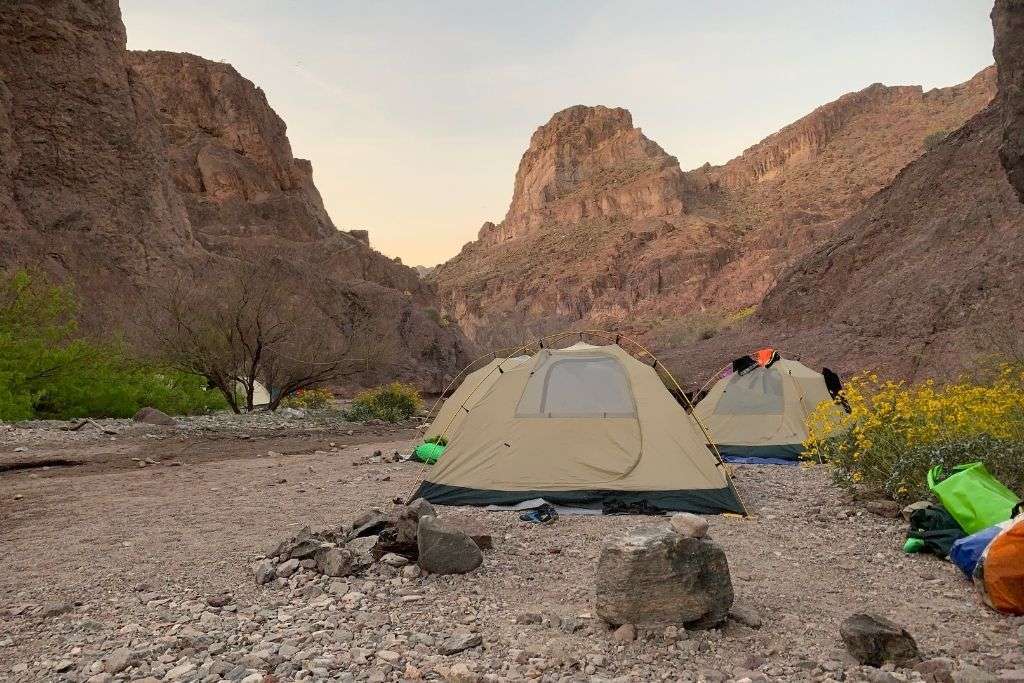
Even with breaking down all you need to know about car camping above, there are still a few tips and tricks for newbie campers.
Tips for Sleeping in Your Car
- Ventilate the car when sleeping. Crack the window slightly or keep open a bit of a sunroof to avoid fog and moisture collecting indoors overnight. Pro tip: bring some cheap mesh to cover the slot, keeping air flowing but bugs out.
- Finding a flat spot is key for a good night’s sleep — you don’t want to feel like you’re constantly sliding around.
- You’re surrounded by windows! Bring something to keep out the light and for privacy – window protectors for the front and then using a cord to attach a curtain can make for a cozy bedroom space.
Tips for Meals and Cleaning
- When thinking of meal prep, be sure to pack a few dried herbs and spices. Things like flavored salts or spice blends can easily elevate a simple camp dish. They’re lightweight and take up little space.
- Pack in & pack out trash. Adhere to the Leave No Trace principles and be sure to recreate responsibly. If you’re in a place where you think critters may be a problem (like in bear country), it’s always handy to have a bear canister (we like the BearVault) for your foods and anything scented (like toothpaste). Be sure to bring a container to serve as a trash can that has a lid (like a larger tupperware container) or your own trash bags.
- Pack everything in categories and stay organized to avoid a messy campsite or forgetting an important item. Use small clear containers keeping kitchen gear, shower gear etc. all separated and easy to locate.
One Last Note
Always remember that you don’t need fancy and expensive gear to be an outdoors person. Especially when starting out, save money by using things you already have. Find what you like to do and then invest in the right gear or equipment that will last.
Things like utensils in the back of your kitchen drawer are often just as effective as some fancy gadget from the outdoor retailer. We’re always a big fan of using what you’ve got and just having some fun time outdoors!
Meet the Writer
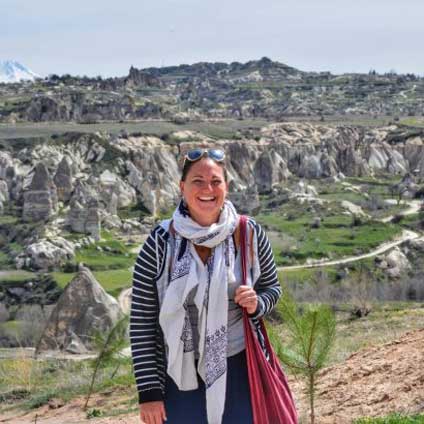
Abbie Synan
Abbie Synan is a freelance writer who focuses on sustainability initiatives within the tourism industry. Born and raised in Pittsburgh, Pennsylvania, she has been traveling full time since 2013, hopping the globe, visiting over 95 countries while exploring ways to be a more mindful global citizen. She is the sustainable travel expert for Wanderful, an international travel community, as well as the content co-lead for Impact Travel Alliance, a global organization educating and inspiring travelers.
Learn More Camping Tips
- How To Keep Your Feet Warm During Winter Hikes
- What To Wear Hiking In Hot Weather
- Best Campsite Lighting Ideas for Your Next Trip to the Woods
- How to Identify Poison Ivy (And How to Treat an Allergic Reaction)
- Going for a Hike? Here’s the Best Hiking Clothes for Women
- Best Mosquito Repellent for Camping, According To Our Guides
- Review: Kula Cloth, The Antimicrobial Pee Cloth For Hiking
- Review: Garmin inReach Mini

